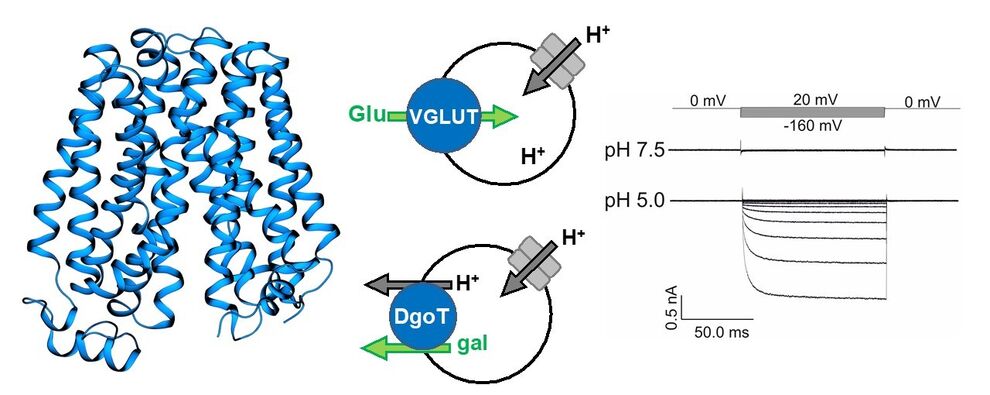Proton transfer and substrate recognition in SLC17 transporters
Vesicular glutamate transporters (VGLUTs) accumulate the neurotransmitter glutamate in synaptic vesicles and thus represent an essential determinant of synaptic strength in excitatory synapses in the brain. VGLUTs are modulated by membrane potential and pH and also act as chloride ion channels, thus ensuring their correct functioning during the complete synaptic vesicle cycle. The recent determination of the VGLUT structure, as well as its bacterial homolog DgoT, has opened the way to understand the molecular basis of transport in these two members of the SLC17 family. We aim at investigating the molecular basis of transport by combining computational (classical molecular dynamics, along with massively scalable quantum mechanics/molecular mechanics simulations already used in DynIon’s first period [1]), and experimental approaches (cellular electrophysiology, transport assays and site-directed mutagenesis). Our studies will pave the wave to understand how misregulation of VGLUTs can be implicated in psychiatric and neurodegenerative diseases and potentially develop therapeutic interventions.
J. Am. Chem. Soc. 142, 7254-7258

Jun-Prof. Mercedes Alfonso-Prieto
52428 Jülich
Prof. Dr. Paolo Carloni
52428 Jülich
Prof. Dr. Christoph Fahlke
52425 Jülich

